Overview
In the fast-paced world of tech startups, one significant challenge many founders face is navigating the complexities of UX design. The pressure to create engaging digital products can often feel overwhelming, especially when resources are limited and the stakes are high. This is where the right tools can make all the difference.
Imagine pouring your heart into a product, only to find that users struggle to connect with it. This pain point is all too common, and it can lead to frustration and setbacks. However, there is hope. By utilizing essential UX design tools, startups can enhance their collaboration, prototyping, and design efficiency, ultimately leading to more impactful user experiences.
Tools like Figma, Adobe XD, and InVision are not just software; they are lifelines for tech startups. Figma fosters real-time collaboration, allowing team members to work together seamlessly, while Adobe XD offers powerful prototyping features that bring ideas to life. InVision enhances the design process with its intuitive interface, making it easier to communicate concepts to stakeholders. These tools empower founders to create products that resonate with users, alleviating some of the stress that comes with the design process.
As you embark on your journey, remember that you are not alone. Many have faced similar challenges and have found success by embracing these tools. By sharing experiences and insights, we can build a supportive community that nurtures growth and innovation. Together, let’s transform the way we approach UX design and create digital products that truly make a difference.
Introduction
In the competitive landscape of technology startups, many founders grapple with the challenge of creating exceptional user experiences. This quest is not just a hurdle; it’s an opportunity to connect meaningfully with users. As digital interactions become increasingly pivotal, the right UX design tools can empower startups to craft engaging, user-centered products that resonate deeply with their audience. Yet, with a plethora of options available, it’s understandable to feel overwhelmed.
How do you choose the tools that will genuinely elevate your design process and inspire innovation? This article is here to explore ten essential UX design tools tailored specifically for tech startups. Together, we will uncover their unique features and the transformative impact they can have on your brand's digital journey, helping you navigate this vital aspect of your business with confidence.
RNO1: Comprehensive Branding and Digital Product Design Services
In the fast-paced world of technology, many startups struggle to establish a strong digital presence. This challenge can lead to feelings of frustration and uncertainty, especially when trying to navigate the complexities of branding and digital marketing. RNO1 understands these struggles deeply and is here to help. As a global branding and digital growth agency, RNO1 is dedicated to crafting radical digital experiences that are tailored specifically for modern brands.
The digital landscape is evolving rapidly, and with projections suggesting that 82% of internet traffic will come from video content by 2025, the need for engaging digital experiences has never been more pressing. RNO1's expertise in digital product design not only enhances user engagement but also drives conversion rates—mobile application conversion rates are three times higher than those of mobile websites. This understanding of the market empowers RNO1 to support tech enterprises in carving out a unique identity in competitive environments.
Moreover, RNO1 is committed to nurturing long-term collaborations through subscription-based models. This innovative approach allows emerging businesses to access continuous support and expertise without the burden of extensive in-house teams. It’s a solution that enhances cost efficiency while fostering an environment of continuous innovation. In a world where agility is key, RNO1 ensures that brands can adapt and thrive amidst constant change.
As the digital marketing industry is projected to reach a staggering $1.3 trillion by 2033, the importance of effective branding strategies cannot be overstated. RNO1 has a proven track record of successful partnerships with technology companies, including highlighted case studies with firms like Microsoft. These successes position RNO1 as an essential ally for those aiming to succeed in the digital era. With a design-first mindset, RNO1 transforms branding strategies, ultimately leading to improved digital marketing effectiveness and fostering customer loyalty. Together, we can navigate this journey and build a brighter future for your brand.
Figma: Collaborative Design and Prototyping Tool
In the fast-paced world of tech startups, collaboration can often feel like a daunting challenge. Teams struggle to connect effectively, leading to frustration and inefficiency in design processes. This is where Figma steps in as a nurturing ally, offering UX design tools that allow teams to work together in real-time on UI creation and prototyping. With its intuitive interface and robust features like vector editing and development systems, Figma has become an essential resource for startups eager to enhance their creative processes.
As of 2025, Figma proudly supports over 4 million users, including major tech companies. This widespread adoption speaks volumes about its effectiveness in the industry. Imagine the relief of knowing that many others have found success with this tool, just like you can. Figma’s seamless integration with various tools enhances its functionality within contemporary creative workflows, allowing teams to work more efficiently and collaboratively.
Consider this: 90% of designers reported using Figma, significantly boosting their productivity and collaboration. This is not just a statistic; it reflects the shared experiences of countless professionals who have found a supportive community through this platform. Notably, Figma's collaborative capabilities enable multiple designers to contribute simultaneously, fostering innovation and creativity.
Real-world examples illustrate Figma's positive impact: companies like Airbnb and Microsoft have harnessed its features to optimize their creative workflows, leading to improved user experiences and quicker project completion times. Testimonials from technology companies highlight Figma's role in revolutionizing their UI creation efforts. Many commend its intuitive interface and cooperative features that enhance productive teamwork.
In summary, Figma stands out among UX design tools by doing more than just enhancing design efficiency; it nurtures the dynamic needs of tech startups. By providing a supportive environment for collaboration, it stands as a crucial resource in the competitive landscape of UI design. RNO1 is committed to design-driven solutions that foster growth in branding and digital initiatives, ensuring that you are never alone on your journey.
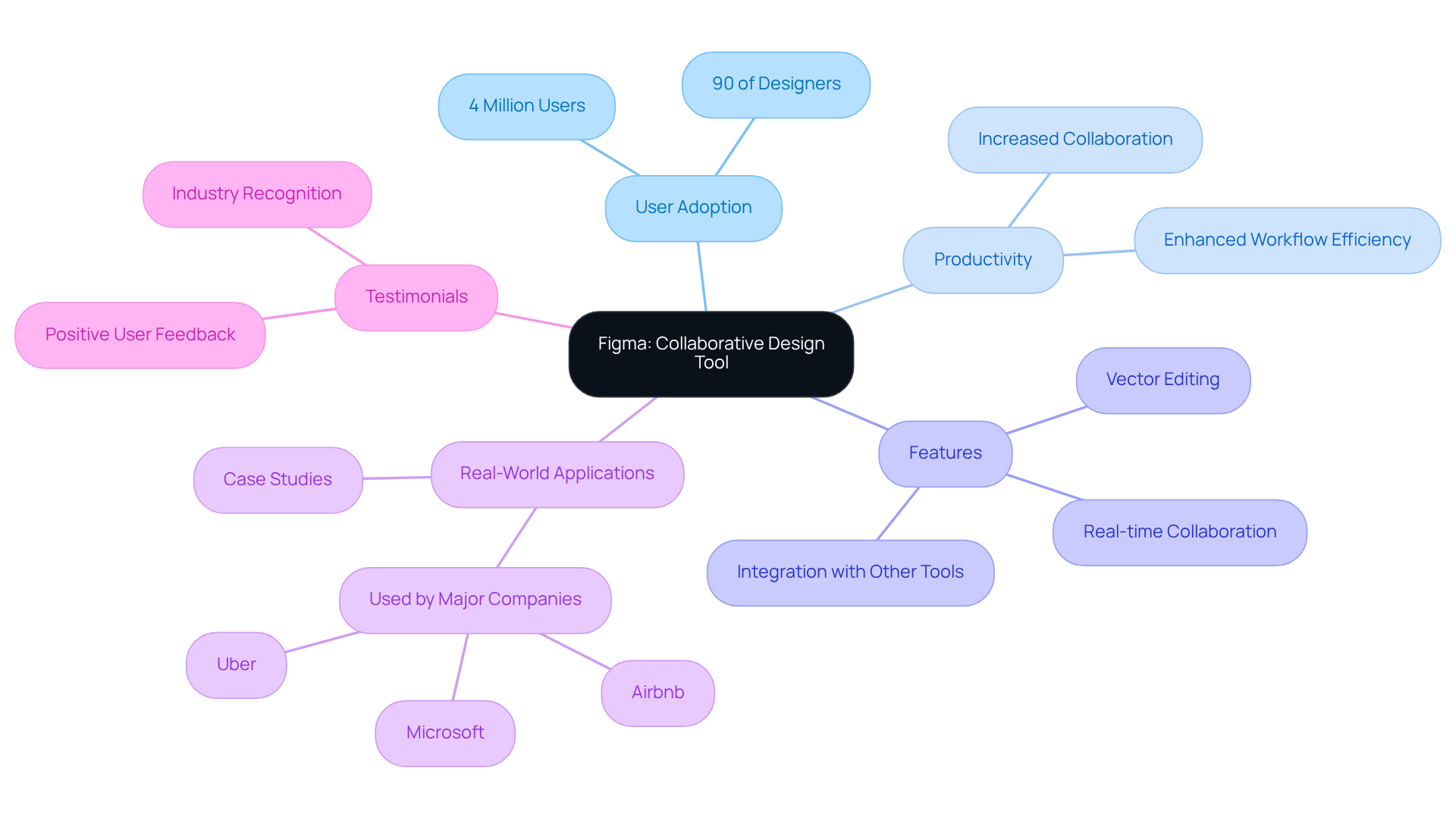
Adobe XD: Interactive Prototyping and Design Systems
In the fast-paced world of tech startups, creating engaging user experiences can often feel overwhelming. Many founders struggle with how to effectively prototype and design applications that truly resonate with their audience using UX design tools. This challenge can lead to frustrating interactions, which not only affect user satisfaction but can also hinder growth. Did you know that a seamless experience can increase conversion rates by up to 400%? It’s a staggering statistic that underscores the importance of getting it right from the start. Moreover, 88% of users are less likely to return to a site after a negative experience, highlighting the critical need for UX design tools that improve user interaction.
Adobe XD emerges as a powerful ally in this journey. With its interactive prototypes, designers can simulate real-world application interactions, providing a clear visualization of how users will engage with their products. Features like voice prototyping and auto-animate empower startups to craft dynamic and captivating interfaces, essential for fostering user satisfaction. As UX designers increasingly recognize the value of these dynamic interfaces, UX design tools like Adobe XD become indispensable in creating experiences that truly connect with individuals.
As we look towards 2025, the advancements in Adobe XD continue to evolve, offering improved functionalities that simplify the design process and enhance engagement. It's crucial for new businesses to stay informed about these developments, especially as 71% of UX experts anticipate that AI and machine learning will transform user experience. Additionally, embracing accessibility and inclusive design is vital; 55% of UX professionals emphasize its importance in reaching diverse user groups.
In this competitive landscape, understanding the advantages of Adobe XD, along with other UX design tools like Figma—favored by 72% of UX professionals—can guide startups in making informed creative decisions. Remember, you’re not alone in this journey; leveraging these resources can lead to a more fulfilling and successful user experience, ultimately paving the way for your startup’s growth and connection with its audience.
Sketch: Vector Graphics Editor for UX/UI Design
In the fast-paced world of tech startups, establishing a strong brand identity can feel overwhelming. Many founders struggle with creating visuals that not only capture attention but also convey their unique message. This inconsistency can lead to confusion and a lack of trust among potential customers, which is a pain point that can be difficult to navigate. Thankfully, there’s a powerful ally in this journey: Sketch.
Sketch is a vector graphics editor recognized as one of the top UX design tools specifically for UX/UI creation, known for its simplicity and user-friendly interface. Its robust features, such as symbols and shared styles, empower creative teams to maintain consistency across projects—something that is crucial for cohesive branding. By utilizing Sketch, startups can craft visually appealing designs that resonate deeply with their target audience. When brands prioritize uniformity in their appearance, they not only boost recognition but also foster trust. Studies suggest that consistent branding can raise revenue by as much as 23%, a significant impact for any growing business.
As the creative landscape evolves, Sketch continues to innovate. It introduces updates that enhance collaboration and simplify workflows, making it an essential resource for startups aiming to stand out in a competitive digital environment. By embracing UX design tools such as Sketch, founders can not only alleviate the stress of design consistency but also build a brand that truly reflects their vision and values. Together, let’s navigate this journey toward a cohesive and impactful brand identity.
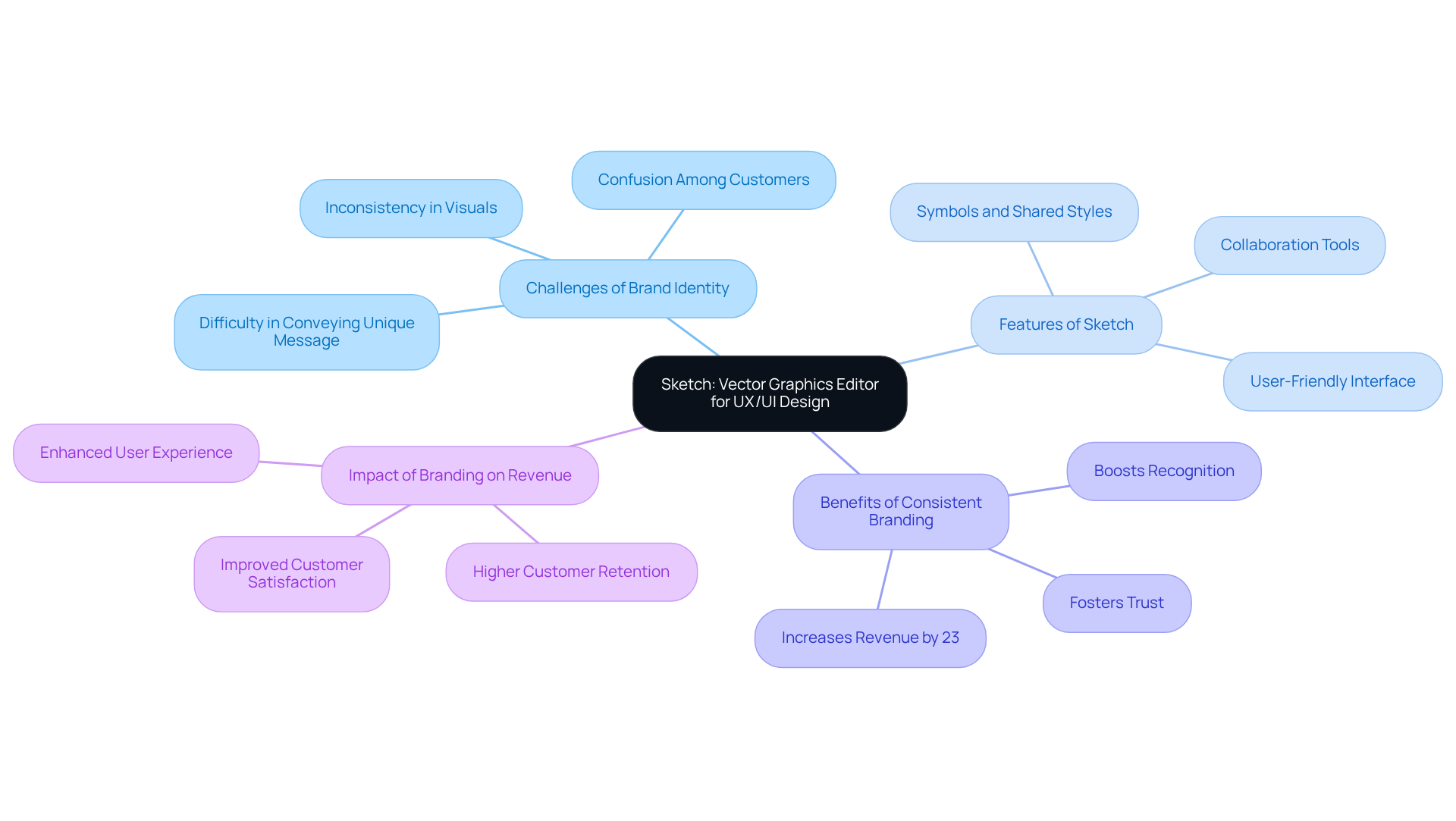
InVision: Prototyping and Collaboration Platform
In the fast-paced world of tech startups, many founders face the daunting challenge of creating products that truly resonate with their audience. Inefficient collaboration and the struggle to gather meaningful feedback can leave teams feeling overwhelmed and uncertain. This is where InVision steps in as a nurturing ally. It serves as a powerful platform for UX design tools, allowing designers to craft interactive mockups and efficiently gather feedback from stakeholders. With features like Freehand for brainstorming and Craft for seamless integration with creative tools, InVision fosters a collaborative environment that supports iterative development processes.
Startups utilizing InVision have found a way to significantly enhance their product development journey. By integrating genuine feedback from users, they can create offerings that align more closely with their target audience's needs. Case studies reveal that teams leveraging InVision have successfully navigated multiple product iterations, leading to improved user satisfaction and higher success rates in product launches. The stories shared by startups highlight how InVision's user-friendly interface and collaborative features, which are among the best UX design tools, have transformed their design workflows, making it an invaluable resource in the ever-evolving tech landscape.
If you're a startup founder feeling the weight of product development, consider how InVision can support your journey. Embrace the opportunity to connect with your audience and refine your creations through a platform designed for collaboration and growth. You're not alone in this; many have walked this path and found success with the right tools at their side.
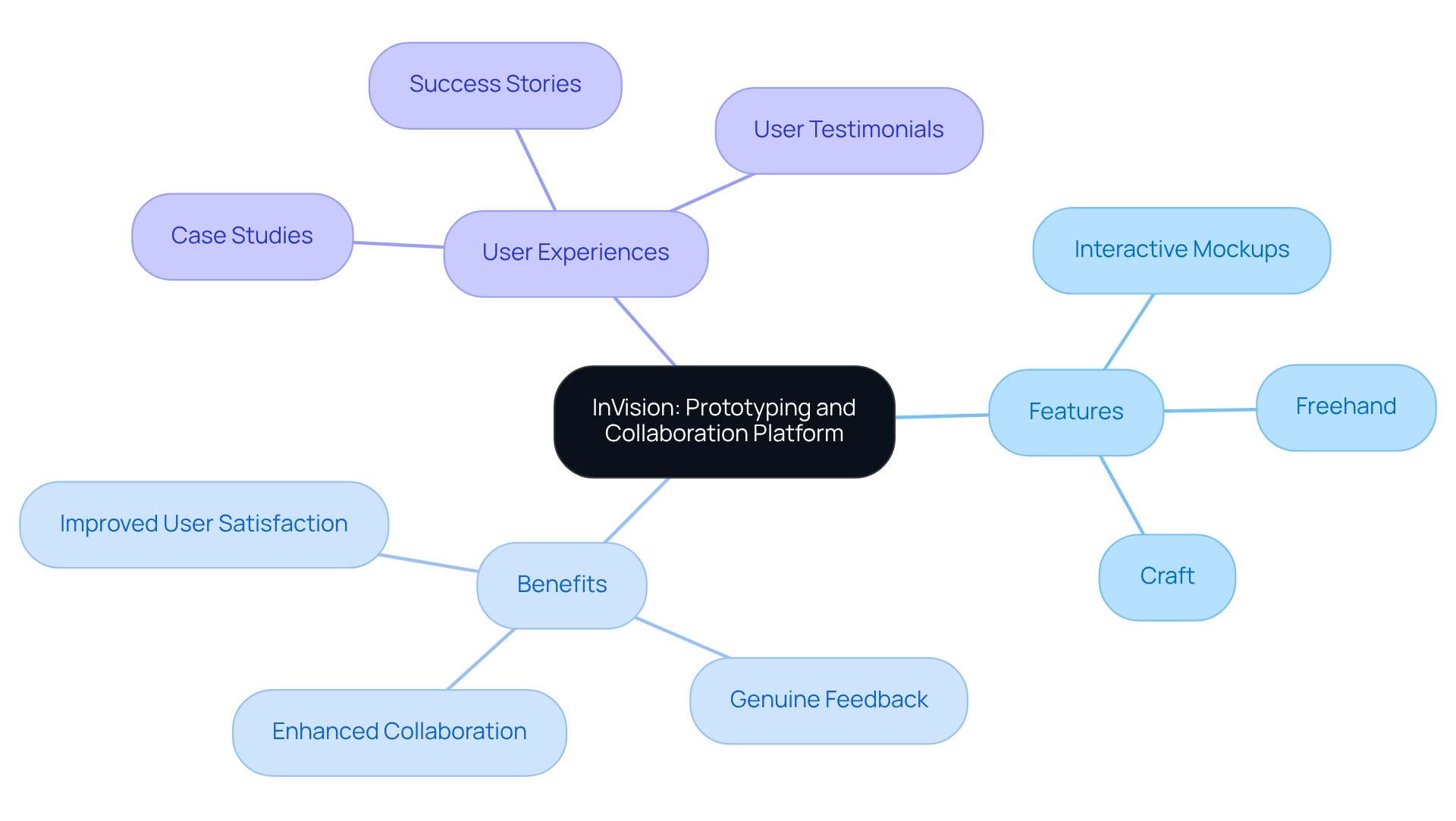
Axure RP: Wireframing and Detailed Prototyping Tool
For many startup founders, the journey of bringing an idea to life can feel daunting. The challenge of effectively communicating concepts and ensuring a seamless user experience often weighs heavily on their shoulders. This is where Axure RP steps in as a compassionate ally. It’s a powerful tool for wireframing and prototyping that empowers designers to create detailed, interactive prototypes without the need for coding. With features like dynamic panels and conditional logic, Axure RP allows designers to simulate intricate interactions, alleviating some of the stress associated with development.
Startups can truly benefit from utilizing Axure RP to validate their concepts and enhance user experiences before diving deeper into development. Statistics reveal that new businesses employing wireframing applications like Axure RP experience a remarkable 30% decrease in development time. This reduction stems from early-phase testing and the incorporation of valuable feedback, which ultimately leads to a more refined product.
Effective case studies, such as those from TUI Germany and Siemens Healthineers, beautifully illustrate how Axure RP contributes to improving user experiences and ensuring that design choices align with user needs. As we look ahead to 2025, it’s heartening to see Axure RP continue to evolve, providing updates that enhance usability and integration features. This reinforces its status as a vital ux design tool for new businesses focused on delivering exceptional digital experiences. Embracing ux design tools not only streamlines processes but also fosters a sense of community and support among tech startup founders, encouraging them to share their journeys and learn from one another.
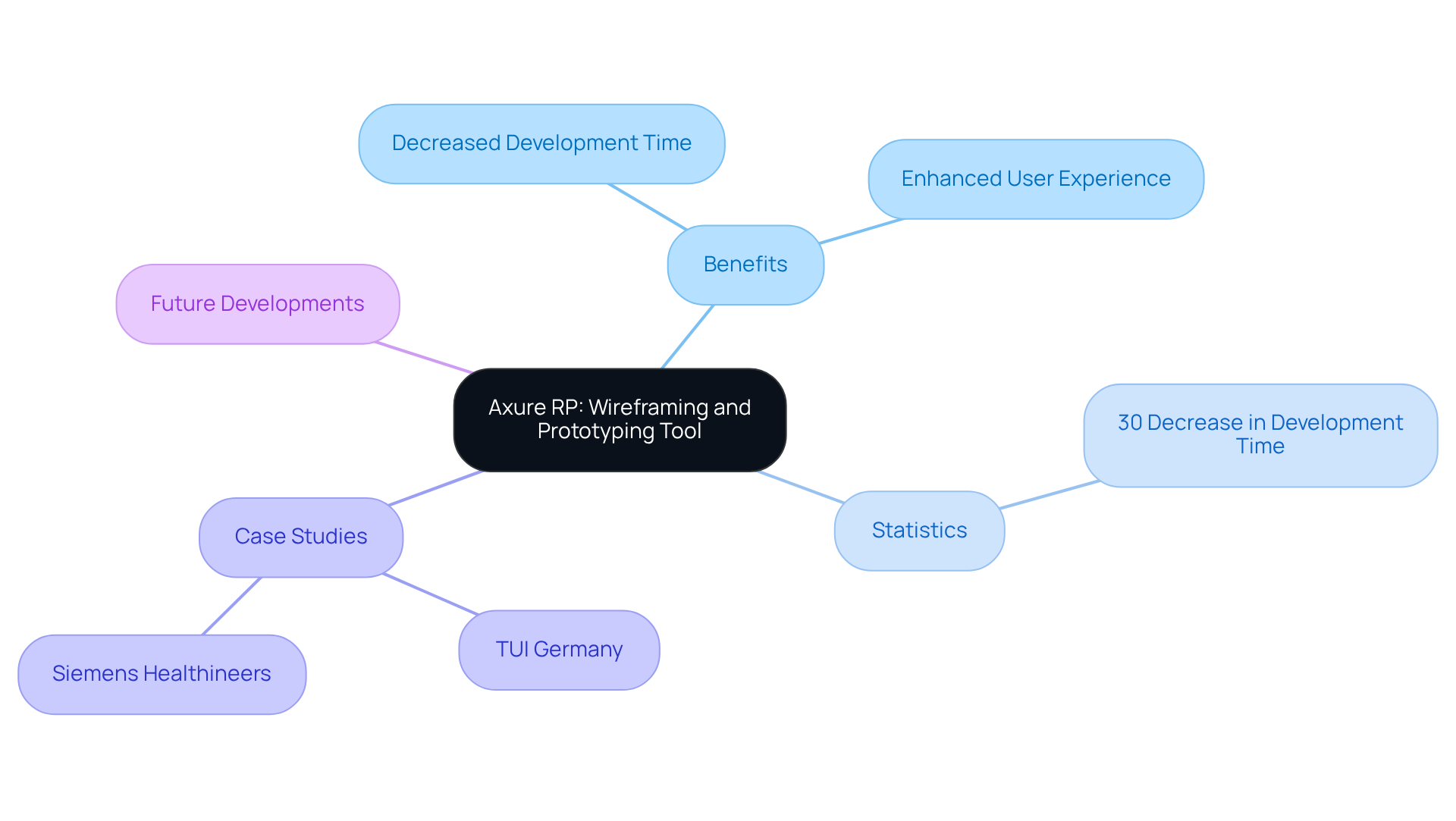
Marvel App: Simplified Prototyping for All Skill Levels
In the fast-paced world of tech startups, many founders face the daunting challenge of turning their innovative ideas into tangible products. Prototyping can often feel overwhelming, leaving teams unsure of how to effectively communicate their vision with UX design tools. This uncertainty can lead to frustration, especially when trying to gather essential feedback from potential users. However, Marvel App offers a nurturing solution that simplifies this process, allowing individuals to create interactive prototypes quickly and intuitively.
With its user-friendly drag-and-drop interface, Marvel App welcomes teams of all skill levels, making it an ideal choice for new businesses eager to make their mark. The platform’s integrated testing functionalities empower founders to validate their concepts early on, ensuring that their products resonate with consumer needs. As we look ahead to 2025, Marvel App continues to evolve, enhancing its capabilities to support user testing and boost overall efficiency.
By streamlining the prototyping process, Marvel App significantly increases the chances of startup success. It enables teams to iterate quickly and effectively, fostering a culture of innovation. As Tom & David Kelley wisely noted, 'If a picture is worth 1000 words, a prototype is worth 1000 meetings.' This quote beautifully highlights the vital role that prototyping plays in effective communication and decision-making.
In today’s competitive market, where rapid iteration and user-centered design are essential for thriving, access to efficient UX design tools for prototyping resources is crucial. With approximately 25% of users abandoning an application within the first day, the importance of user testing and early validation cannot be overstated. The global mobile application market is projected to reach $756 billion by 2027, underscoring the need for startups to leverage tools like Marvel App to navigate this landscape successfully.
As Steve Jobs famously stated, 'Design is not just what it looks like and feels like. It’s how it works.' This insight emphasizes Marvel App's commitment to user-centered creation, making it a valuable ally for founders on their journey. Together, we can transform ideas into reality, fostering a supportive community that thrives on collaboration and innovation.
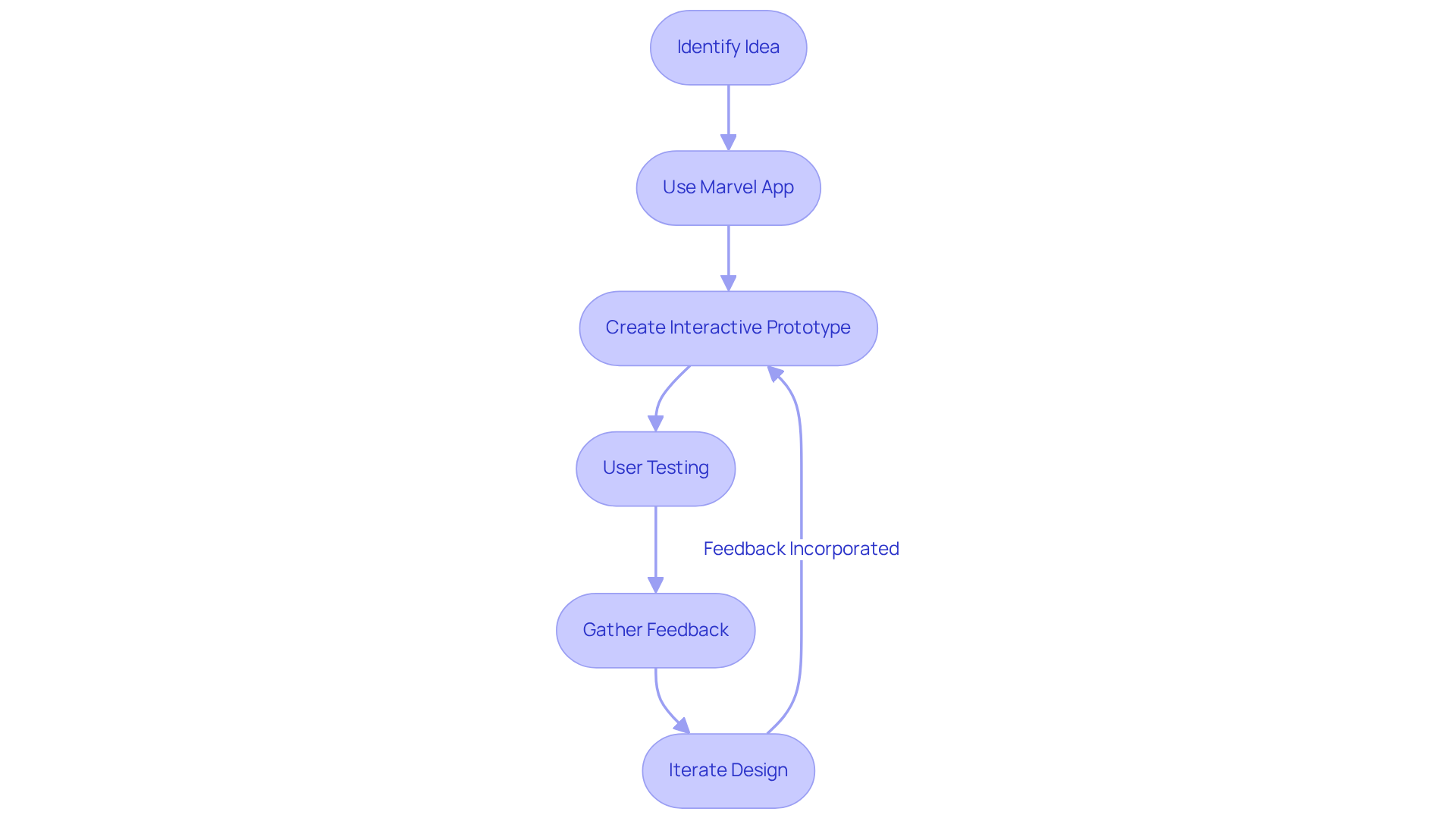
Balsamiq: Rapid Wireframing Tool for Quick Sketches
For many tech startup founders, the journey of transforming ideas into tangible products can feel overwhelming. The challenge of conveying creative concepts clearly, especially in the early stages of development, often leads to frustration and prolonged discussions. This is where Balsamiq comes in as a nurturing ally. By serving as a powerful rapid wireframing tool, it enables teams to create low-fidelity wireframes using ux design tools that mimic hand-drawn sketches. This focus on simplicity allows startups to express their visions quickly and effectively, which is particularly beneficial during the initial phases of product development.
Imagine the relief of reaching consensus on visual concepts without the stress of labor-intensive revisions later on. With Balsamiq, teams can iterate swiftly, significantly reducing the time spent on adjustments. Its user-friendly interface fosters collaboration, inviting all stakeholders to contribute to the vision without the complexities that often accompany high-fidelity prototypes. In this way, Balsamiq not only simplifies the creative workflow but also enhances overall productivity, making it an essential ux design tools resource for tech startups eager to bring their ideas to life.
The positive feedback speaks volumes; Balsamiq has received a 5/5 rating based on 2 reviews, highlighting its effectiveness. As Akshay Lahri beautifully puts it, "Thanks to Balsamiq Cloud for turning rough ideas into clear, structured wireframes effortlessly! You've been a game-changer." This sentiment resonates with the importance of early participant testing emphasized by experts like Steve Krug, who advocate for the iterative process that Balsamiq supports. Furthermore, developing personas based on research is vital for aligning design with expectations, a principle that Balsamiq embraces through its intuitive design features. In sharing these insights, we hope to create a sense of community and support for all tech startup founders navigating this exciting yet challenging landscape.
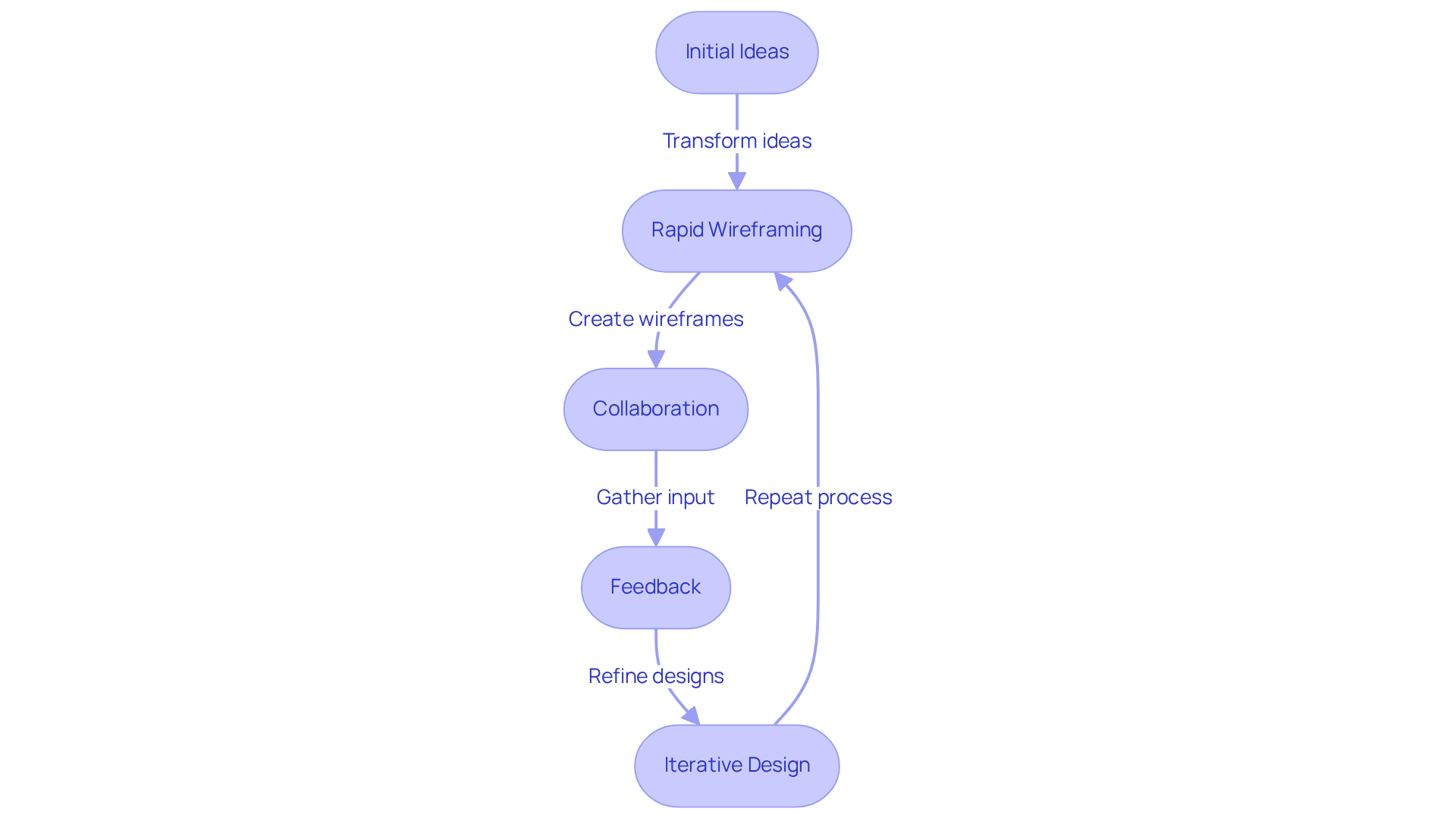
UserTesting: User Feedback and Insights Platform
In the fast-paced world of tech startups, one pressing challenge often arises: understanding the needs and experiences of users. Without this insight, teams may struggle to create products that truly resonate, leading to frustration and missed opportunities. This is where platforms like UserTesting come into play, offering a nurturing approach to gathering both qualitative and quantitative insights from real participants. By closely observing interactions with prototypes, startups can uncover pain points and identify areas ripe for enhancement. This user-centric methodology utilizes ux design tools to ensure that products are designed with the end-user in mind and significantly boosts engagement and satisfaction rates.
At RNO1, we understand the importance of these insights. That’s why we utilize platforms such as UserTesting to support our results-oriented strategy. Our commitment is to ensure that our solutions are guided by genuine feedback from actual individuals. For instance, in collaboration with several tech startups, we have harnessed UserTesting to enhance digital experiences. The results speak volumes—higher customer retention and improved client satisfaction are just a few of the quantifiable outcomes we’ve witnessed.
This dedication to incorporating user feedback into the development process underscores the essential role of ux design tools like UserTesting in fostering product success and innovation. We invite you to share your experiences and thoughts, as together, we can create solutions that truly meet the needs of users and drive your startup forward.
Zeplin: Design Handoff and Collaboration Tool
In the fast-paced world of tech startups, one common challenge emerges: the gap between creative and development teams. This disconnect can lead to miscommunication, frustration, and ultimately, a compromised final product. It's a struggle many founders face, and it can feel overwhelming. Fortunately, there’s a solution that nurtures collaboration and streamlines the process: Zeplin.
Zeplin serves as an essential collaboration tool among UX design tools that efficiently bridges this gap. By enabling designers to share their work seamlessly with developers, it consolidates all necessary specifications, assets, and code snippets in a single platform that includes UX design tools. This streamlined approach not only ensures accurate implementation of designs but also significantly reduces the risk of miscommunication, enhancing the overall quality of the final product.
As of 2025, Zeplin boasts an impressive user base of 85,000, including 1,800 paying customers such as Slack and Pinterest. This widespread adoption underscores the tool's effectiveness in facilitating collaboration. Startups, in particular, can benefit from its capability to automate the handoff process, allowing them to speed up product development while preserving their creative integrity. Notably, Zeplin has raised $1.2 million to further enhance its services, demonstrating its commitment to improving collaboration between designers and developers.
Real-world examples highlight Zeplin's impact on enhancing collaboration. Teams using Zeplin report enhanced workflows and quicker project turnaround times, as it removes the cumbersome manual processes traditionally linked with handoffs. Developers emphasize the importance of precise implementation, noting that resources like Zeplin are essential for transforming creative visions into functional products. Pelin Kenez, a co-founder of Zeplin, shared insights on the challenges faced during the handoff process, stating, "As a designer prepares the layout, they have to pass it on to the developer... Zeplin automates this process."
In a landscape where effective communication between design and development is paramount, Zeplin stands out as an indispensable UX design tool. Its role in fostering collaboration not only streamlines workflows but also contributes to the successful realization of innovative digital experiences. Additionally, Zeplin's capability to differentiate necessary elements for iOS and Android further enhances its relevance for startups developing cross-platform applications. Embracing Zeplin could be the nurturing step your team needs to thrive in this competitive environment.
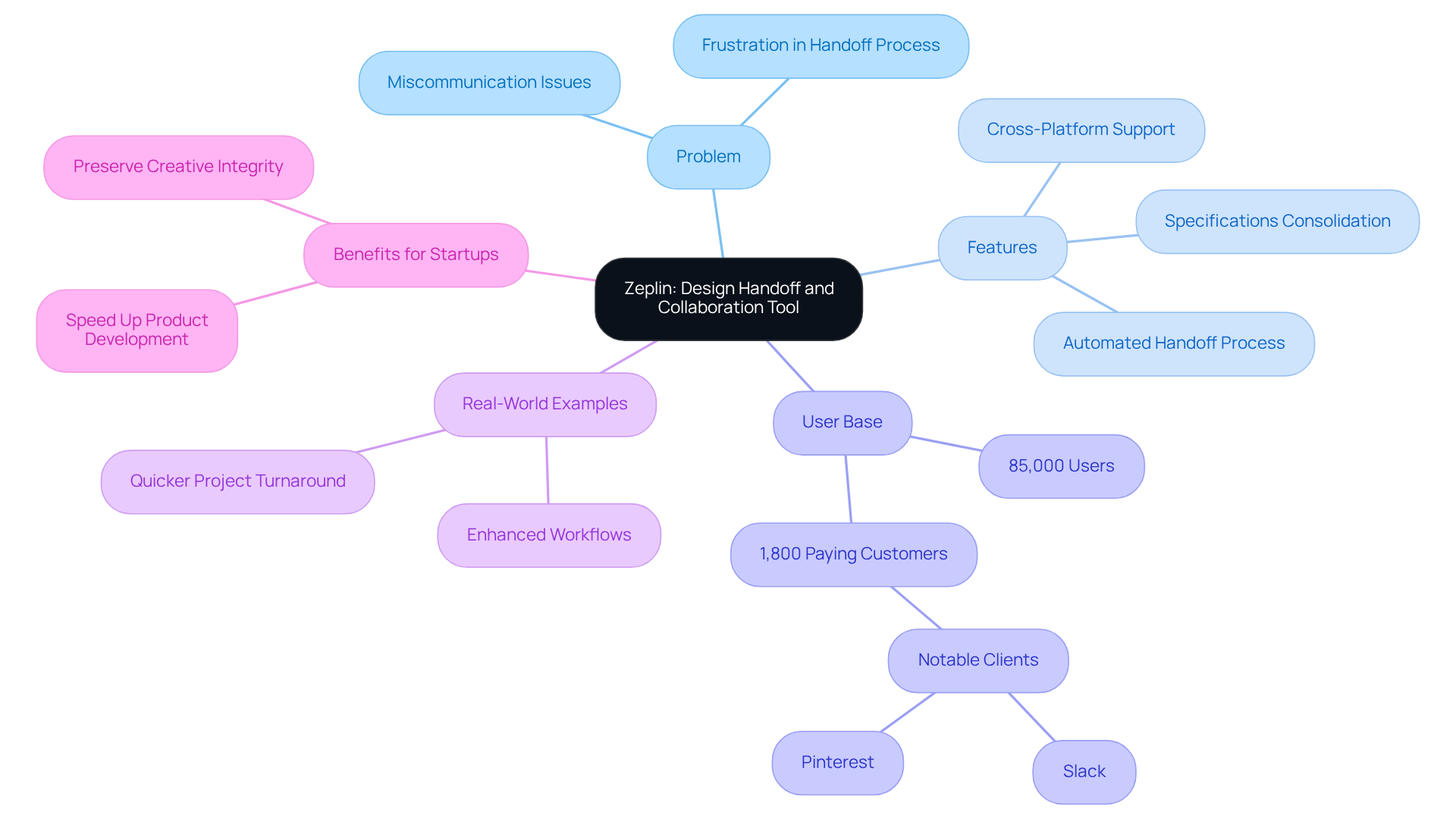
Conclusion
In the world of technology startups, the quest for exceptional user experiences can often feel daunting. Many founders grapple with the challenge of connecting with their audience in a meaningful way. However, this challenge also presents a vital opportunity for growth and deeper connections. By harnessing the right UX design tools, founders can create engaging, user-centered products that resonate profoundly with their users. This article has explored ten essential tools tailored for tech startups, illustrating how these resources can enhance design processes and inspire innovation, ultimately leading to a stronger digital presence.
The insights shared highlight the unique features and transformative impacts of various UX design tools. For instance, RNO1's comprehensive branding services can significantly elevate a startup's identity, while the collaborative capabilities of Figma foster teamwork and creativity. Tools like Adobe XD, with its interactive prototyping, Sketch's vector graphics editing, and InVision's user feedback integration, all contribute to a more streamlined design process, addressing the specific needs of startups. Additionally, Axure RP, Marvel App, Balsamiq, UserTesting, and Zeplin provide invaluable support in wireframing, prototyping, and ensuring effective communication between design and development teams.
Embracing these essential UX design tools is not just about enhancing efficiency; it’s about cultivating a culture of innovation and collaboration within tech startups. As the digital landscape evolves, leveraging these resources will be essential for navigating the complexities of user experience design. By prioritizing user-centered approaches and utilizing the right tools, startups can create products that not only meet but exceed user expectations. This, in turn, paves the way for lasting success in a competitive market. Remember, you are not alone in this journey; together, we can foster a community of support that empowers you to thrive.
Frequently Asked Questions
What services does RNO1 offer?
RNO1 offers comprehensive branding and digital product design services tailored for modern brands, focusing on crafting radical digital experiences.
How does RNO1 help startups establish a digital presence?
RNO1 helps startups navigate the complexities of branding and digital marketing, providing expertise that enhances user engagement and drives conversion rates.
What is the significance of video content in digital marketing according to RNO1?
RNO1 highlights that 82% of internet traffic is projected to come from video content by 2025, emphasizing the need for engaging digital experiences.
How does RNO1 support tech enterprises in competitive environments?
RNO1 empowers tech enterprises to carve out a unique identity through effective branding strategies and a design-first mindset.
What innovative approach does RNO1 use to support emerging businesses?
RNO1 employs subscription-based models to offer continuous support and expertise, enhancing cost efficiency and fostering innovation.
What is the projected growth of the digital marketing industry by 2033?
The digital marketing industry is projected to reach $1.3 trillion by 2033, highlighting the importance of effective branding strategies.
How does Figma facilitate collaboration in design processes?
Figma allows teams to work together in real-time on UI creation and prototyping, enhancing collaboration and efficiency in design.
What are some key features of Figma that benefit startups?
Figma offers an intuitive interface, vector editing, and seamless integration with various tools, making it essential for improving creative processes.
How widely is Figma adopted in the tech industry?
As of 2025, Figma supports over 4 million users, including major tech companies, indicating its effectiveness and popularity.
What impact does Figma have on designers' productivity?
90% of designers reported using Figma, significantly boosting their productivity and collaboration.
How does Adobe XD assist in creating user experiences?
Adobe XD allows designers to create interactive prototypes that simulate real-world application interactions, improving user engagement.
What features of Adobe XD enhance the design process?
Adobe XD includes features like voice prototyping and auto-animate, which help create dynamic and captivating interfaces.
What trends are expected to shape UX design by 2025?
UX experts anticipate that AI and machine learning will transform user experience, making it essential for startups to stay informed about these developments.
Why is accessibility and inclusive design important in UX?
55% of UX professionals emphasize the importance of accessibility and inclusive design to reach diverse user groups effectively.




